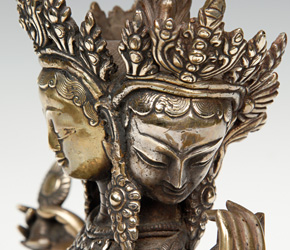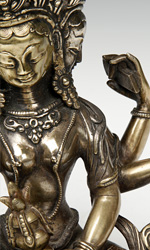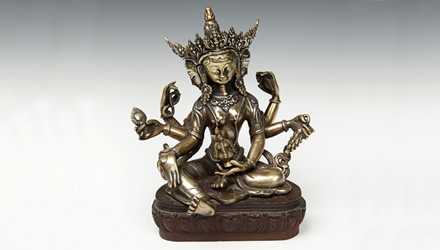Seated Figure of Vasundhara
 |
|
Vasundhara is a deity found in both the Hindu and Buddhist pantheon, particularly in Nepal. In Hinduism she is considered the goddess of wealth along with another deity called Laxmi. In Buddhist iconography she is considered the goddess of the earth. In the southern part of the Kathmandu valley, there is an unnamed spring at the foot of a hill and a sacred pond. Hindus go there to pay homage to Vasundhara and Laxmi; while Buddhists worship Vasundhara.
 |
|
Vasundhara is portrayed sitting on a lotus pedestal in a posture similar to Tara, the goddess of compassion. In her hands she holds a sheaf of paddy for sustenance, a full vase or kalasa containing the elixir of life, a strand of jewels for prosperity, a putaka or book of scriptures for wisdom, and a norbu, or jewel, symbolizing eternity. Her right hand is in a mudra (hand position) called Varada, which is the gesture of charity or of conferring gifts (boons) or grace.
The multiple heads and arms are reflective of a tantric depiction in Buddhist and Hindu art. This means the concept represented by the deity should be viewed in terms of physical reality as opposed to the purely spiritual realms. In other words, this statue is saying you can have abundance and prosperity here on earth, in real time, with the aid of Vasundhara.
Download this Article: Vasundhara.pdf
